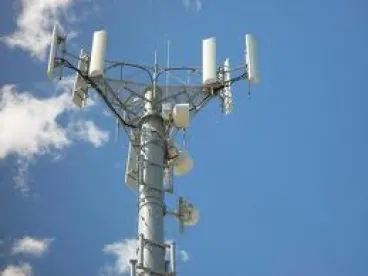On August 12, 2020, a Ninth Circuit panel affirmed three orders issued in 2018 by the Federal Communications Commission (FCC) to promote infrastructure investment and broadband deployment, including 5G small cell nodes.
In City of Portland v. United States, the three-judge panel largely held that the FCC’s Small Cell, Moratoria, and One-Touch Make-Ready (OTMR) Orders were proper exercises of the FCC’s authority under the 1996 Telecommunications Act. The Court did reverse, however, a few provisions of the Small Cell Order dealing with local government interpretation of aesthetic regulations.
The Small Cell Order
The FCC’s September 2018 Small Cell Order was designed to remove various state and local barriers that would prevent 5G providers from accessing existing facilities for installation of small cells. Among other things, the Small Cell Order:
-
Limited fees that local governments can impose for accessing public rights-of-way (ROW), above a safe harbor amount, to a “reasonable approximation” of the costs of processing applications and managing the ROW;
-
Ordered that “aesthetics requirements are not preempted if they are (1) reasonable, (2) no more burdensome than those applied to other types of infrastructure deployments, and (3) objective and published in advance”; and
-
Shortened the FCC’s timelines for approving permit applications (“shot clocks”) to deploy wireless facilities from 90 to 60 days to review applications for installations on existing infrastructure and from 150 to 90 days for all other applications.
Local government and municipally owned utilities challenged these requirements as arbitrary and capricious. They also asserted that the Small Cell Order could not preempt local regulation of public ROW, and one county argued the FCC improperly failed to address radiofrequency standards from an earlier rulemaking. But the 9th Circuit panel affirmed the FCC’s Small Order in all but a few respects. The Court held that the FCC’s requirement that all aesthetic regulations be “objective” was arbitrary and capricious and that legitimate aesthetic requirements were not always preempted just because they are “more burdensome.”
The Moratoria Order
The FCC issued its Moratoria Order in August 2018 in response to complaints that state and local ordinances and practices were either explicitly or having the effect of barring small cell deployment. The FCC’s Order therefore prohibited express and “de facto” moratoria that effectively halt or suspend the acceptance, processing, or approval of applications or permits for wireless facilities as in violation of Section 253(a) of the Communications Act (47 U.S.C. § 253(a)). The Commission did provide an exemption for “emergency” bans on the construction of 5G facilities to protect public safety and welfare, but only where such laws were competitively neutral, necessary to address the emergency, disaster, or related public needs, and geographically targeted.
The City of Portland challenged the Moratoria Order as overly broad and unreasonable, in that it would include even seasonal restrictions on construction, that it was an invalid application of Section 253, and self-contradictory in its definitions of express and de facto moratoria. The Court rejected each of these challenges. It agreed with the FCC that municipal ordinances only would qualify as de facto moratoria where the delay caused by the ordinances “continues for an unreasonably long or indefinite amount of time.” The Court also agreed with the FCC that Section 253(a) is broad enough to properly preempt local moratoria; that there was nothing inconsistent with the FCC’s definitions; and that the emergency ban exception was necessary to prevent the pretextual use of safety to stop deployment.
Constitutional Challenges to the Small Cell and Moratoria Orders
The 9th Circuit further rejected the petitioners’ claims that the Small Cell Order sanctioned unlawful takings in violation of the Fifth Amendment and that both orders compel local governments to enforce federal law in violation of the Tenth Amendment. The Court held that the Small Cell Order was not a “physical taking” because it only precludes local governments from charging unreasonable fees when granting applications and “continues to allow municipalities to deny access to property for a number of reasons.” Nor was the Small Cell Order a “regulatory taking,” because it still allows for recovery of actual costs. The Court also found that limiting cost recovery to actual costs is not a regulatory taking. And the Court further reasoned that neither order violated the Tenth Amendment because the FCC was “interpreting and enforcing the 1996 Telecommunications Act, adopted by Congress pursuant to its delegated authority under the Commerce Clause, to ensure that municipalities are not charging small cell providers unreasonable fees.”
OTMR Order
In August 2018, the FCC also adopted new, OTMR rules for expedited access to utility poles
(now codified at 47 C.F.R. § 1.1411(j)). The OTMR process gives an entity seeking to attach to a utility pole the choice either to perform all work necessary to prepare the pole for its facilities ( called “make-ready” work) or follow the current practice where each attacher performs the necessary make-ready work on its own facilities. The OTMR option is only available for “simple” make-ready work.
A group of private utilities did not challenge the central provisions of the OTMR Order, but instead, challenged four secondary rules related to overlashing, preexisting violations, self-help, and rate reform. The Court upheld all of these rules.
-
Overlashing: The FCC’s new overlashing rules (47 C.F.R. § 1.1415) prohibit utilities from charging fees to overlash or requiring permits or engineering studies, and allows attachers to overlash upon 15 days’ advance notice to the utility. The Court affirmed the rule, holding it still allows overlashers and utilities to negotiate the details of overlashing arrangements and the rules are “a reasonable attempt to prevent unnecessary costs to attachers.”
-
Preexisting Violation Rule: The Court also upheld the FCC’s rule, which prohibits utilities from denying access to a new overlasher solely because of a preexisting safety violation that the overlasher did not cause. 47 C.F.R. § 1.1415(b). Petitioners argued this violated Section 224(f)(2), which allows utilities to deny access for “reasons of safety.” The Court held there was no conflict and that the new rule “prevents the utilities from passing the costs off on entities that did not cause the safety problem in the first place.”
-
Self-Help Rule: The FCC’s new self-help remedy (47 C.F.R. § 1.1411(i)) allows a new attacher to engage a utility-approved contractors to complete surveys and make-ready work anywhere on the pole (including the power supply space) if the pole owner or existing attachers do not meet required deadlines. Petitioners argued that allowing self-help in the power supply space jeopardized safety and exceeded the FCC’s authority under Section 224. The Court rejected these challenges. It explained that the rule still provides a utility a 90-day window to complete the pre-attachment work itself, and requires the new attacher provide advance notice of when the self-help work will occur so that the utility can be present if it wishes.
-
Rate-Reform Rule: The Ninth Circuit panel upheld the FCC decision to remove rate disparities between ILECs and CLECs. The Court held the FCC has the authority under Section 224(b)(1) to set just and reasonable rates for all telecommunications carriers and that the max rate set by the FCC, should a disparity arise, was greater than rates set by FCC for CLECs and cable operators, where were previously determined to be reasonable.
Next Steps
We anticipate the petitioner utility pole owners and the FCC will move for en banc review of aspects of the panel decision. If they do so, the petition would be due by September 11, 2020 (because the federal government is the respondent). If the Court denies a petition for rehearing, the parties would then have 90 days from denial of the petition to seek review in the U.S. Supreme Court.







 />i
/>i

